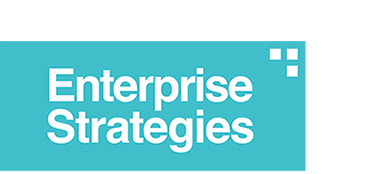
15 May How Klout Could Transform Enterprise Social Media
Clout used to be a vague term that referred to someone’s influence in general. You could have a lot of clout in certain circles, some clout in general or no clout at all. It was fuzzy and that was fine. That was before Klout. Now — whether you spell it with a “c” or with a “k” — clout is a number and is an often-trusted measurement of your online influence.
Klout believers include Cathay Pacific Airways, which recently launched a score-based perk program in the international terminal at San Francisco International Airport. Anyone with a Klout score of 40 or higher is allowed into the airline’s exclusive lounge, where showers, workstations and a noodle bar will keep online influencers happy.
As with most things that are loved by many, there are active dissenters such as Klouchebag. Some might say it’s sour grapes for those who make a case against Klout, but it’s hard to argue that a high Klout score is important for everyone. In fact, I would argue that it most certainly isn’t. (Today, I’m edging out the Aflac duck by two Klout points. Is that really an important comparison?)
This is particularly important to remember if you are considering a Klout-style tool for the enterprise. Klout’s metrics can benefit organizations that embrace an enterprise social culture, but only if they know how they should be using it to their advantage with some employees without alienating or disengaging others.
HOW KLOUT CAN BENEFIT THE ENTERPRISE
Job titles aren’t the best indicators of influence. Take your mid-level managers. If their internal Klout scores are comparatively low, are they being effective leaders? Mid-level managers should be able to influence the hearts and minds of others. If yours aren’t reaching and engaging with influential people, perhaps you have given these folks positions they can’t carry out effectively. They may be filling spaces on an org chart, but are they executing the impact you need?
If you are using enterprise social media tools, you can visibly see these types of discrepancies. You may have noticed that some of your best and most prolific content creators and sharers aren’t your mid-level managers; an internal Klout score could recognize and reward your most influential employees. Enterprise social media empowers employers and managers (and employees) to see what information is being posted, and how people are responding, forwarding or commenting. These are true measurements of influence.
MEASURING THE IMMEASURABLE?
Arguably the most troublesome aspect of Klout is no one knows the algorithm and your score is in the hands of one company. According to the Klout site, each score uses data from social networks in order to measure:
- True Reach: How many people you influence
- Amplification: How much you influence them
- Network Impact: The influence of your network
From a business standpoint, assuming that the score being calculated ties in actions that truly indicate that you influence others, then influence is measurable. That vague thing called “clout” becomes “Klout” and you can now measure what has been virtually impossible to measure before. The capabilities of Klout suggest that we’ve found a way to measure someone’s effectiveness to influence, at least as it relates to enterprise social media.
In the external Klout, your score is affecting people’s judgment of you, whether you want a score or not. Internally, some employees will say that this scoring is not fair, but it’s only unfair if it’s used inappropriately. Not everyone should have a high Klout score. If you are a research scientist in a corporation, your manager should not expect or even want you to have a high Klout score. They want you to be in the research weeds, embracing your inner introvert. You don’t need to be out influencing others.
Think about this way. Say you are applying an activity-based costing model to determine how much a process is going to cost your company by breaking down the steps and figuring out how much each step costs. This model is great for manufacturing processes to find ways to improve efficiencies and reduce costs. If you take that same methodology and apply it to a creative or less predictable process such as branding, product development or public relations, it doesn’t work.
Think of Klout the same way. The metric measuring influence must be valid for the audience you are evaluating. If you’re gauging the influence of a marketer, manager, recruiter, leader, communicator or someone who is trying to affect change within the organization, then Klout is valuable.
ONE OVERALL SCORE DOESN’T TELL THE WHOLE STORY
If in an enterprise setting you knew the individual metrics (true reach, amplification and network impact), then the scores are useful. If you know just the overall score, it’s not as useful. If someone has a high amplification score and a low true reach, that combination will tell a manager that he needs to help the person improve her reach so she can have more influence within your company. If the manager knows just an average or some other combination of amplification and true reach, he can’t use the score as effectively.
Klout measurements could also be tied to performance reviews. If you had a young employee with a high amplification score, as a manager, you could set a goal for her to improve her true reach and network within your company to increase her influence.
Internal communicators are constantly looking for people within their organizations who have great stories. Those ambassadors are creating and sharing those stories. Using some combination of the Klout metrics, these corporate communicators can gauge which employees are creating the most influential content, who is reading it and what the stories are about — all useful in content curation.
When Klout becomes part of the enterprise social media toolbox, being able to see and evaluate how individual scores correlate will be vital to comprehensively acting on them.
EMPLOYEE GROWTH & ENGAGEMENT
When used wisely, the big benefit of Klout could be to let employees see that they are influential, empowered and have a high value. These things are at the heart of employee engagement. Another benefit is more particular to your future leadership.
An emergent leader takes initiative. A Klout tool for the enterprise could help organizations readily find who those people are, and measure how they are influencing others by communicating and collaborating with others. What’s more, managers or other leaders could use the individual metrics to support these rising stars to grow into their full potential. The ability to see who, really, is influencing the vice presidents and C-level executives is incredibly valuable information. Klout has the potential to make that kind of knowledge measurable.

